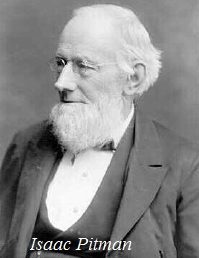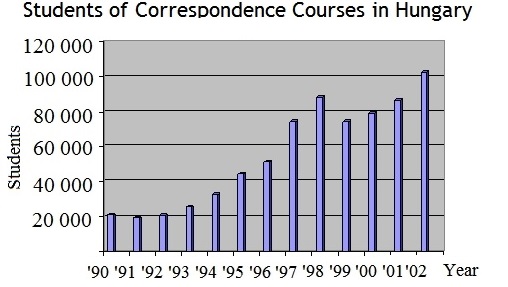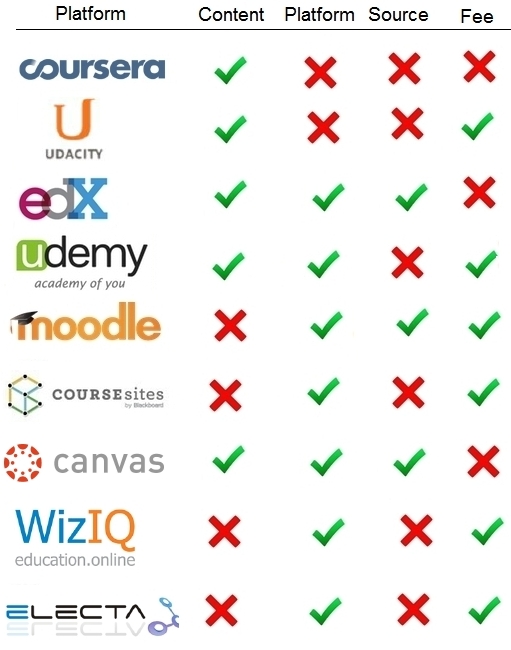
Since the dawn of education conducted by Socrates, Plato and Aristotel the soul of teaching is the live lecturing and dialogue between the teacher and pupils. It went on without trouble till the end of the 20th century when the need for higher education started to increase drastically. The response was the expansion of the already existing Internet remote education. However, the vast majority of the sites barly offer more than e-textbooks, video-lectures, scheduled exercises and student's administration. The real-time, live classroom, interactive lectures are rare as white raven. However, recently a simple technical background is sufficient to involve those very valuable teachers into live teaching who could not travel to the spot due to their tight program or health reason...
History
 First things first so let's go back to history. The remote education has a long record.On March 20, 1728, the Boston Gazette ran an advertisement from a man named Caleb Phillipps, who called himself a 'teacher of the new method of short hand.'
Phillipps offered instruction through weekly letters to people anywhere in the country, allowing them to learn shorthand with the promise that they could be 'as perfectly instructed as those that live in Boston.' This marked the first well-documented case of distance learning, and served as the initial precursor to online colleges.
First things first so let's go back to history. The remote education has a long record.On March 20, 1728, the Boston Gazette ran an advertisement from a man named Caleb Phillipps, who called himself a 'teacher of the new method of short hand.'
Phillipps offered instruction through weekly letters to people anywhere in the country, allowing them to learn shorthand with the promise that they could be 'as perfectly instructed as those that live in Boston.' This marked the first well-documented case of distance learning, and served as the initial precursor to online colleges.
 An Englishman, Isaac Pitman, is credited as an early pioneer. He began teaching shorthand by correspondence in Bath, England in 1840. Students were instructed to copy short passages of the Bible and return them for grading via the new penny post system. Pitman shorthand is still widely used today.
An Englishman, Isaac Pitman, is credited as an early pioneer. He began teaching shorthand by correspondence in Bath, England in 1840. Students were instructed to copy short passages of the Bible and return them for grading via the new penny post system. Pitman shorthand is still widely used today.
The University of London became the first university to offer distance learning courses in 1858.
 American university level distance education began in 1874 at Illinois Wesleyan University where bachelor and graduate degrees could be obtained in absentia. The term 'distance education' is first used in a pamphlet by University of Wisconsin-Madison in the USA in 1892. In the same years University of Chicago became the first standard educational institute of USA to offer correspondance courses.In 1906 as pioner of the term University Wisconsin begins recording lectures and sending them to students - in phonograph form. Pennsylvania State College starting to broadcast courses over the radio in 1922 then State University of Iowa offers five radio courses for credit in 1925. The University of Houston offers the first television college credit classes.
American university level distance education began in 1874 at Illinois Wesleyan University where bachelor and graduate degrees could be obtained in absentia. The term 'distance education' is first used in a pamphlet by University of Wisconsin-Madison in the USA in 1892. In the same years University of Chicago became the first standard educational institute of USA to offer correspondance courses.In 1906 as pioner of the term University Wisconsin begins recording lectures and sending them to students - in phonograph form. Pennsylvania State College starting to broadcast courses over the radio in 1922 then State University of Iowa offers five radio courses for credit in 1925. The University of Houston offers the first television college credit classes.
The teaching of academic and vocational courses by correspondence became quite popular by the first part of the last century and problems of quality and ethical practice came with the popularity. The National Home Study Council (NHSC) was formed in 1926 in part to address these issues. Accreditation of college and university distance programs fell to the National University Extension Association in 1915. However, the University of Nebraska-Lincoln's Independent Study High School became the first university-based correspondence school to offer accredited high school diploma.
Distance education today increasingly uses combinations of different communications technologies to enhance the abilities of teachers and students to communicate with each other. With the spread of computer-network communications in the 1980s and 1990s, large numbers of people gained access to computers linked to telephone lines, allowing teachers and students to communicate in conferences via computers.Distance education also makes use of computer conferencing on the World Wide Web, where teachers and students present text, pictures, audio, and video. File sharing and communications tools like email, chats and and audio and video conferencing are integral to the Internet model.
 The development of technology and the increased need for higher education made possible
in 1989 that Dr. John Sperling and Terri Hedegaard Bishop could launch the University of Phoenix Online campus, the first private university venture to deliver complete academic degree programs to a mass audience via asynchronous online technologies.
After that in 2000 CourseNotes.com launches with dozens of classes at the University of Texas at Austin. The service provides comprehensive professor web sites, including online course documents, calendars, grades, quizzes and surveys.
Finally in 2012 edX, a massive open online course (MOOC) platform, is founded by the Massachusetts Institute of Technology and Harvard University.
The development of technology and the increased need for higher education made possible
in 1989 that Dr. John Sperling and Terri Hedegaard Bishop could launch the University of Phoenix Online campus, the first private university venture to deliver complete academic degree programs to a mass audience via asynchronous online technologies.
After that in 2000 CourseNotes.com launches with dozens of classes at the University of Texas at Austin. The service provides comprehensive professor web sites, including online course documents, calendars, grades, quizzes and surveys.
Finally in 2012 edX, a massive open online course (MOOC) platform, is founded by the Massachusetts Institute of Technology and Harvard University.

Models of Distance Education
Distance Education, Distance Lerning, Remote Education, Remote Teaching, E-learning, Technology-Enhanced Learning (TEL), Computer-Based Learning (CBL), Internet (Web)-Based Learning, Online Education, Virtual Learning Environment, Digital Education, etc. - all this brings thousands (more or less the same) hits in Google search. In essence they mean the same - the teacher and pupils are separated in space and mostly in time, too. However, the models of distance education are falling into two main categories, namely the Corresponding Course or the E-Learning Course, respectively. The difference is the means of knowledge transfer and the management of courses.
 CORRESPONDENCE COURSE is the first model applied in distance education. The original correspondence courses were carried out through the postal service. Professors would mail assignments and lecture notes to students, who would return essays and projects for grading. Most colleges and universities offer correspondence courses and recently they take place over the Internet. Although the concept is the same: students anywhere can take classes without having to physically be present at the school. Students enrolled in university distance learning programs receive their teaching material and schoolwork by (e)mail and much the same way they mail back their work to the professors. The instructor would grade the material, then send on the next assignment. The popularity of correspondence courses are not decreasing. For example in Hungary the interest is increased more than 400(!)% between 1990-2002.
CORRESPONDENCE COURSE is the first model applied in distance education. The original correspondence courses were carried out through the postal service. Professors would mail assignments and lecture notes to students, who would return essays and projects for grading. Most colleges and universities offer correspondence courses and recently they take place over the Internet. Although the concept is the same: students anywhere can take classes without having to physically be present at the school. Students enrolled in university distance learning programs receive their teaching material and schoolwork by (e)mail and much the same way they mail back their work to the professors. The instructor would grade the material, then send on the next assignment. The popularity of correspondence courses are not decreasing. For example in Hungary the interest is increased more than 400(!)% between 1990-2002.
Certain people stand to benefit greatly from correspondance courses. Working professionals find the flexible schedules of correspondence course attractive because what can be tailored to fit their existing obligations. Likewise, people who have very mobile lifestyles, such as those serving in the armed forces stay-at-home moms, all benefit in the correspondence course model. Those with disabilities and those who live in very remote regions may find that a correspondence course is their only opportunity for higher education.
Disadvantage of correspondence course sphere has to do with accreditation and the lack of classroom experiences. Schools that are accredited are usually deemed legitimate. However, a number of unaccredited schools also exist, and these are frequently accused of merely 'selling' diplomas. The lack of classroom experience is compensated by accomplishing the course with some classroom lectures and seminars in the offering institution.
 E-LEARNING COURSE is the modern version of the Correspondence Course with the same benefits and disadvantages. It uses electronic media, information and communication technologies (ICT) instead of mails. It includes numerous types of media that deliver text, audio, images, animation, and streaming video, and includes technology applications and processes such as audio or video tape, satellite TV, CD-ROM, and computer-based learning, as well as local intranet/extranet and web-based learning. E-learning may either be synchronous (real time), asynchronous (self-paced) or mixed (blended) learning.
E-LEARNING COURSE is the modern version of the Correspondence Course with the same benefits and disadvantages. It uses electronic media, information and communication technologies (ICT) instead of mails. It includes numerous types of media that deliver text, audio, images, animation, and streaming video, and includes technology applications and processes such as audio or video tape, satellite TV, CD-ROM, and computer-based learning, as well as local intranet/extranet and web-based learning. E-learning may either be synchronous (real time), asynchronous (self-paced) or mixed (blended) learning.
The recent solution for delivery of E-LEARNING COURSES is the LMS (Learning Management System) or MOOC (Massive Open Online Courses) platform. They consist of packages for preparation of teaching materials, conduction of synchronous tests, for live lectures, and discussion forums as well as for course management. The MOOC is offered mainly free for unlimited number of students, while the earlier born LMS is restricted in number and usually there is tution fee.

Survey of MOOC, LMS, LiveClassroom Sites

Coursera ( www.coursera.com ) is the biggest content provider of education on MOOC platform that partners with top universities and organizations worldwide. It offers courses online for anyone to take, for free. It has 9,940,046 students worldwide in 839 courses from 114 partners. Benefits are the free unverified and fee based verified certificates of completion, the biggest catalog in the educational market, the greatest variety of course making partners, the transcripts in several languages. Disadvantages are that students should follow the pace of professors, they may have long waiting time for activating some courses, the quality of courses is varying .
Udacity ( www.udacity.com ) is a content provider offspring of free computer classes of Stanford University. It has 38 mostly IT oriented courses, 90 000 students from 203 countries in the summer of 2012 (with the greatest number of students from the United States - 42 percent, India - 7 percent, Britain - 5 percent, and Germany - 4 percent). Age of Udacity students for course CS101 range from 13-year-olds to 80-year-olds. Advanced 13-year-olds are able to complete multiple, higher-level computer science courses on Udacity. Benefits are that students can start anytime and can move on in their own pace. The courses are focused on workplace skills. Disadventages are that no free certificates, students should work on their own if they do not pay the premium version of courses, and very few material are available in foreign languages.
edX ( www.edx.org ) is a content and platform provider used by that universities such as Harvard and MIT and offers free courses more than 100,000 students. The platform is open source, however, investment is necessary in installation as well as in maintenance. edX is suitable for organizations that want a modern, flexible, robust course-management platform with the ability to accommodate large enrollments. Benefits are the free 'honor system' certificates, the fee-based verified certificates and the advanced certificates for specialized work. It has a big catalog from interesting and prestigious university partners. It is great for the sciences and medicine and has foreign language classes. Disadvantages are the frustrating discussion forums. The quality of courses is varying. There are no apps.
Udemy ( www.udemy.com )is a content and platform provider specialized for private experts of anykind to create courses. It as the YouTube of MOOCs. Then they can offer the course to the public either for fee or free. Udemy provides its own MOOC's platform, tools and professional help for the individuals to make their own course(s). Udemy has made a special effort to attract corporate trainers seeking to create coursework for employees of their company. The platform is full of coders, photographers, designers and other specialists who offer their knowledge in the form of an online course. The most distinct strength of the site is its base of 2,000,000 registered students participating in 16 000 (!) courses. When one builds a course on Udemy, he/she is able to reach this pool of potential students. No Udemy curses are currently credentialed for college credit, but some courses generate credit toward technical certification.
 Moodle (moodle.org) is an open-source learning management system (LMS) that allows users to build and offer online courses. Moodle was originally developed by Martin Dougiamas to help educators create online courses with a focus on interaction and collaborative construction of content, and is in continual evolution. It is Still the most widespread platform (54143 registered Moodle sites in 230 countries!), however the first version of Moodle has been released on 20 August 2002.It was built for traditional online classrooms rather than MOOCs, which attract a large number of students. It tends to be easier to install than edX, and there are hosted or one-click install options available. However, there are several commercial Moodle service companies offering professional help for course creation on Moodle platform and course hosting (www.whoishostingthis.com). Moodle is suited for organizations that want a full-featured, customizable LMS. The platform offers more than edX in terms of educational tools, analytics and SCORM compliance (SCORM stands Sharable Content Object Reference Model what is a collection of standards and specifications for web-based e-learning). Disadvantage that the platform is over 10 years old. therefore a number of configuration options can be daunting, and system performance suffers with larger numbers of students. edX is suitable for organizations that want a modern, flexible,solution.
Moodle (moodle.org) is an open-source learning management system (LMS) that allows users to build and offer online courses. Moodle was originally developed by Martin Dougiamas to help educators create online courses with a focus on interaction and collaborative construction of content, and is in continual evolution. It is Still the most widespread platform (54143 registered Moodle sites in 230 countries!), however the first version of Moodle has been released on 20 August 2002.It was built for traditional online classrooms rather than MOOCs, which attract a large number of students. It tends to be easier to install than edX, and there are hosted or one-click install options available. However, there are several commercial Moodle service companies offering professional help for course creation on Moodle platform and course hosting (www.whoishostingthis.com). Moodle is suited for organizations that want a full-featured, customizable LMS. The platform offers more than edX in terms of educational tools, analytics and SCORM compliance (SCORM stands Sharable Content Object Reference Model what is a collection of standards and specifications for web-based e-learning). Disadvantage that the platform is over 10 years old. therefore a number of configuration options can be daunting, and system performance suffers with larger numbers of students. edX is suitable for organizations that want a modern, flexible,solution.
CourseSites by Blackboard ( www.coursesites.com) is an exceptionally robust platform. It has most of the features that Moodle has, including extensive teaching tools, reporting features and SCORM compliance. It is also cloud-based. You can set up a course in minutes and never have to worry about maintenance or upgrades. The service is free for up to five live courses, and Blackboard has given no indication that this will change. CourseSites is a good option for individuals, for example, a teacher who wants to migrate part of a curriculum to an online format,or organizations looking to start experimenting with online courses without having to install anything . Disadvantages are the five-course maximum and the inability to brand your course place limitations on how this platform can be applied. But with the lowest maintenance costs and the highest number of features, CourseSites is a good option.
Canvas ( www.instructure.com) is a cloud-hosted, is an open-source learning management system (LMS) that allows users to build and offer online courses like Moodle and CourseSites. Canvas is from Instructure and in use at several universities including University of Washington, University of Maryland and the Utah Educational Network (including University of Utah and Utah State University). In November 2012 Instructure also developed a MOOC platform called as Canvas Network. Canvas was built using Ruby on Rails as the web application framework backed by a PostgreSQL database. It incorporates JQuery, HTML5, and CSS3 to provide a modern user interface. If you'd like to use Canvas in your own course, or you just want try Canvas out, there is no need to do all the work of installing it yourself. Canvas Cloud is Free for Teachers to use, just sign up to get started ( www.instructure.com/try-canvas ).If at a later time you do want to migrate from your own install to Canvas Cloud, or vice versa, you can use the course export and import features to migrate all your content( https://github.com/instructure/canvas-lms/wiki )
WizIQ ( https://www.wiziq.com ) is a commercial LiveClassroom site that can be combine with Moodle. The site is designed to help students and teachers find each other, and to provide an learning environment. It was started by Harman Singh who is also the CEO of authorGEN a Raleigh based company (with a development arm in Chandigarh, India) whose flagship product is authorSTREAM. WizIQ's Alexa traffic rank for India places it among the top 1,000 highest traffic sites, and its global Alexa traffic rank exceeds many of its competitors. WizIQ virtual classroom runs using a Web browser and Adobe Flash. On the site, one can find online tests, tutorials, and recorded classes. The features of the site includes: audio/video, whiteboard, support for PowerPoint, screensharing Support for other file types including sound, video, Microsoft Word documents, Flash, PDF. The website indicates that a dial-up modem will be functional but the broadband connection is recommended for a better experience.
e-Lecta ( www.e-lecta.com ) is a commercial LiveClassroom site - much alike to WizIQ. The live virtual classroom facility can also be combine with Moodle and other LMS program. e-Lecta Live offers online tutoring - the students have an opportunity to work one-on-one to get questions answered or receive help with homework or other assignments provided by instructors or peers. The live training sessions can be scheduled, or students can drop into to an existing virtual classroom to connect with the tutor. eLecta Live can bring in remote experts to the classroom, can host easily and effectively web based meetings, significantly reducing travel or teleconferencing costs.

I had to face a hard problem in the last academic year. Due to family reason I moved far away from the place of my university. Let's say two thousands kilometers of distance. Of course the remote education seems to be the obvious solution.
I sized up my condition. I had two subjects in four classroom courses. A master course of Geoinformation for Hungarian and English speaking students, and an other master course on Information for a specialisation class. It was only icing on the cake that I had a correspondance master class in classroom lecture for 6 hours presentation and 6 hours practice in the semester. Adding all of this the bottom line was three times 2-2 hours presentation in a week, at pre-fixed time and in prefixed classrooms for different bunches of students. All this was accomplished three hours excercises a week. Naturaly the student management was done by the university administration and I had a Phd student to conduct the exercises. I had some notes, but the bulk of the 'knowledge transfer' was based on live lecturing illustrated with some ppt slides. I must not say that I am deeply convinced - as true follower of Socrates - on the importance of the oral presentation where the 'personal shine' is an indispensible factor of the knowledge transfer.
I started to search after the proper method of distance education fitting to my condition. My search are summarized in the previous point. As first choice there were the MOOCs (Coursera, Udacity, edX, Udemy) but they did not match to my need at all. I did not want to attract hundreds of thousends students, to manage their administration and neiteher I wished to pass them teaching materials online allowing them self-pace learning.
As second choice there were the LMS facilities (Moodle, Canvas, Coursesites by Blackboard) that seems to be more useful to me after the first glance. I downloaded the Moodle which was promised that simple to install and run (or it can be hosted cheaply). What is more important it has plugin for live classroom presentation. When I started to work with the (freely) downloaded version Moodly 2, I had to experience that it is oriented mainly for course management what I did not need. It supports the preparation of course material(test, notes, ppt etc.) not more than I already knew about this subject, but definitely more complicated way. In the live session the students are supposed not to be in a classroom but individually located and connected via Internet to the Moodle server from all over the world. Consequently the server must have either a large pipe to the net or must be in the cloud. More or less I should agree
with Christopher Dawson who wrote the following
( ZDNet Education February 1, 2011 ):
"Sometimes it seems that your only choices in the LMS market are to either pay Blackboard for a relatively turnkey solution, or pay a full-time Moodle developer who can really take advantage of the open source system and make it everything it needs to be for your institution, or pay a host like Moodlerooms and miss out the deep customizability of the LMS..."
Finally, there were the LiveClassroom offers (WizIQ, e-Lecta). The close relation of them with Moodle can be seen even one eye. Beside the web-conferencing and screen-sharing facilities - that is to say the basic need for me - they offer hosting for Moodle courses of their clients. The concept of the LiveClassroom is the usual. The students all over the place of the world connected to the classroom via Internet - not like my student whom are seated in a real classroom waiting for my lesson...

The picture shows my personal solution mathing to my conditions. It is based on Skype version 6. that allows screen-sharing in normal session, and the help of my PhD student. He connected his laptop to the Internet in the classroom and adjusted a projector to the machine - as it had been usualy done in every traditional class presentation. The only extras were the loudspeakers connected to the laptop. I called him in Skype and after the connection my projected picture appeared on the wall screen and my greeting words were load enough to fill up the classroom thanks to the loudspeakers. On my screen at home I could see the students in the benches since the laptop camera was directed to them. After greetings I turned to the screensharing mode of Skype and started my lecture. Still I could monitor the class in the small window shown the picture of the remote laptop camera.
 My unique investment in this business was a Wacom Intuos pen tablet (80 Euro) that proved to be very useful. The ppt offers the facility to use your mouse as a marker or as a pen. The Intuos pen tablet works just like the mouse, however the pen shape fits much better to the writing hand. I used to make marking on the text shown on the slides and I used an empty slide as whiteboard either to accomplish my presentation or to write down some important message.
My unique investment in this business was a Wacom Intuos pen tablet (80 Euro) that proved to be very useful. The ppt offers the facility to use your mouse as a marker or as a pen. The Intuos pen tablet works just like the mouse, however the pen shape fits much better to the writing hand. I used to make marking on the text shown on the slides and I used an empty slide as whiteboard either to accomplish my presentation or to write down some important message.
During the semester, I visited my university and I gave a traditional lecture to the class that had been subjected to the same lecture in remote way. Obviously I asked them to compare the experiences and most of them did not find difference. Actually it encouraged me to write this post.I think this simple and low cost 'personal solution' of me can help universities to use teachers from distance and teachers to give lectures on distant universities.

